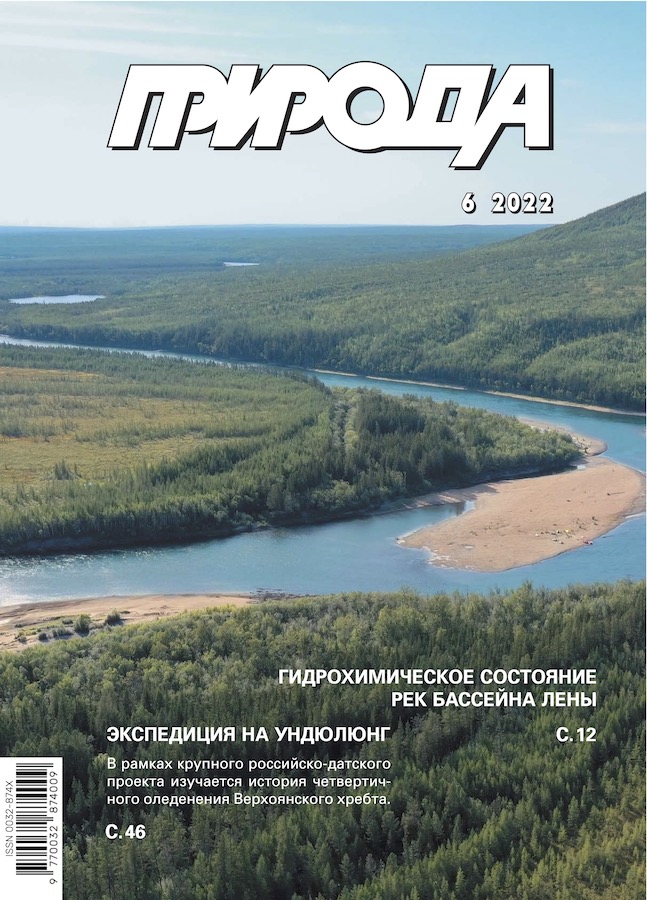Quaternary Palaeoentomology: 10 Years in the South of Western Siberia
- Authors: Gurina A.A1, Dudko R.Y.1, Zinovyev E.V2, Legalov A.A1
-
Affiliations:
- Institute of Systematics and Ecology of Animals, Siberian Branch of RAS
- Institute of Plant and Animal Ecology, Ural Branch of RAS
- Issue: No 6 (2022)
- Pages: 3-11
- Section: Articles
- URL: https://journals.eco-vector.com/0032-874X/article/view/627684
- DOI: https://doi.org/10.7868/S0032874X22060011
- ID: 627684
Cite item
Abstract
Insects are good indicators of the landscape and climatic conditions of both modern and past eras due to their high abundance and species diversity, as well as their sensitivity to environmental changes. Quaternary insects are relatively well studied in the northern regions, while in the south part of Western Siberia they have been studied only since 2012. Material from more than two dozen localities of Quaternary insects found in this region provides us opportunity to distinguish several types of entomofauna. The “otiorhynchus” fauna which inhabited tundra-steppes in the southern part of the West Siberian Plain during the maximum of the last glaciation is especially conspicuous. The unique combination of species testifies to the extreme contrast of microclimatic conditions of the Late Pleistocene, even in comparison with modern analogues from extracontinental regions. The warming of the Holocene resulted in a decrease in continentality and a distinct change in the species composition of insects. Holocene entomocomplexes are very close to modern ones, with the exception of species associated with human economic activity.
Keywords
About the authors
A. A Gurina
Institute of Systematics and Ecology of Animals, Siberian Branch of RAS
Email: auri.na@mail.ru
Novosibirsk, Russia)
R. Yu Dudko
Institute of Systematics and Ecology of Animals, Siberian Branch of RAS
Email: rdudko@mail.ru
Novosibirsk, Russia)
E. V Zinovyev
Institute of Plant and Animal Ecology, Ural Branch of RAS
Email: zin62@mail.ru
Yekaterinburg, Russia)
A. A Legalov
Institute of Systematics and Ecology of Animals, Siberian Branch of RAS
Email: fossilweevils@gmail.com
Novosibirsk, Russia)
References
- Киселев С.В. Позднекайнозойские жесткокрылые Северо-Востока Сибири. М, 1981.
- Kuzmina S.A. Quaternary Insects and Environment of Northeastern Asia. Paleontol. J. 2015; 49 (7): 679–867. doi: 10.1134/S0031030115070011.
- Киселев С.В. Позднеплейстоценовые жесткокрылые Зауралья. Палеонтологический журнал. 1973; 4: 70–73.
- Киселев С.В. Плейстоценовые и голоценовые жесткокрылые Западной Сибири). Современное состояние и история животного мира Западно-Сибирской низменности. Свердловск, 1988; 97–118.
- Coope G.R. A late Pleistocene insect fauna from Chelford, Cheshire. Proc. Roy. Soc. Lond. 1959; 151(942): 70–86. Availably at: www.jstor.org/stable/83127.
- Gurina A.A., Dudko R.Yu., Prosvirov A.S. et al. Coleoptera assemblages from the Quaternary deposits of Kizikha river, the southernmost late Pleistocene insects of the West Siberian Plain. Invertebrate Zoology. 2019; 16(2): 165–182. doi: 10.15298/invertzool.16.2.05.
- Zinovyev E.V. Sub-fossil beetle assemblages associated with the “mammoth fauna” in the Late Pleistocene localities of the Ural Mountains and West Siberia. ZooKeys. 2011; 100: 149–169. doi: 10.3897/zookeys.100.1524.
- Gurina A.A., Dudko R.Yu., Tshernyshev S.E. et al. Late Pleistocene insects from the Dubrovino site at Ob River (West Siberia, Russia) and their paleoenvironmental significance. Palaeontologia Electronica. 2019; 22.1.3A: 1–18. doi: 10.26879/914.
- Gurina A.A., Dudko R.Yu., Zinovyev E.V. et al. Late Pleistocene taphocoenosis of insects and small mammals from the upper reaches of the Ob River. Paleontol. J. 2018; 52(13): 1610–1622. doi: 10.1134/S003103011813004X.
- Гурина А.А., Дудко Р.Ю., Легалов А.А., Зиновьев Е.В. Позднеплейстоценовый рефугиум лесных жесткокрылых насекомых (Coleoptera) в новосибирском Приобье. Палеонтология, стратиграфия и палеогеография мезозоя и кайнозоя бореальных районов: Материалы науч. онлайн-сессии, 19–22 апреля 2021 г. Новосибирск, 2021; 252–254.
- Гурина А.А., Дудко Р.Ю., Легалов А.А., Зиновьев Е.В. Динамика энтомокомплексов юго-востока Западно-Сибирской равнины как отражение климатических изменений на рубеже поздний неоплейстоцен — голоцен. Материалы V Всероссийской научной конференции с международным участием «Динамика экосистем в голоцене» (к 100-летию Л.Г.Динесмана). М., 2019; 81–83.
- Dudko R.Yu., Danukalova G.A., Gurina A.A. et al. Insects and molluscs of the Late Pleistocene at the Gornovo site (Southern Ural foreland, Russia): New data on palaeoenvironment reconstructions. Quaternary International. 2021; 1–24. doi: 10.1016/j.quaint.2021.10.003.
- Зиновьев Е.В. Региональные особенности комплексов жуков севера Европы и Сибири в период окончания позднего плейстоцена (34–24 тыс. лет назад). XV съезд Русского энтомологического общества. Материалы съезда. Новосибирск, 2017; 203–204.
- Дудко Р.Ю., Маталин А.В., Федоренко Д.Н. Фауна жужелиц (Coleoptera, Carabidae) Юго-Восточного Алтая. Зоологический журнал. 2010; 89(11): 1312–1330.
- Chytrý M., Horsák M., Danihelka J. et al. A modern analogue of the Pleistocene steppe-tundra ecosystem in southern Siberia. Boreas. 2019; 48: 36–56. doi: 10.1111/bor.12338.
- Мордкович В.Г. Население жужелиц и чернотелок (Coleoptera, Carabidae, Tenebrionidae) Курайской и Чуйской котловин Юго-Восточного Алтая как показатель особенностей местных почв. Животное население почв в безлесных биогеоценозах Алтае-Саянской горной системы. Новосибирск, 1968; 178–208.
Supplementary files









